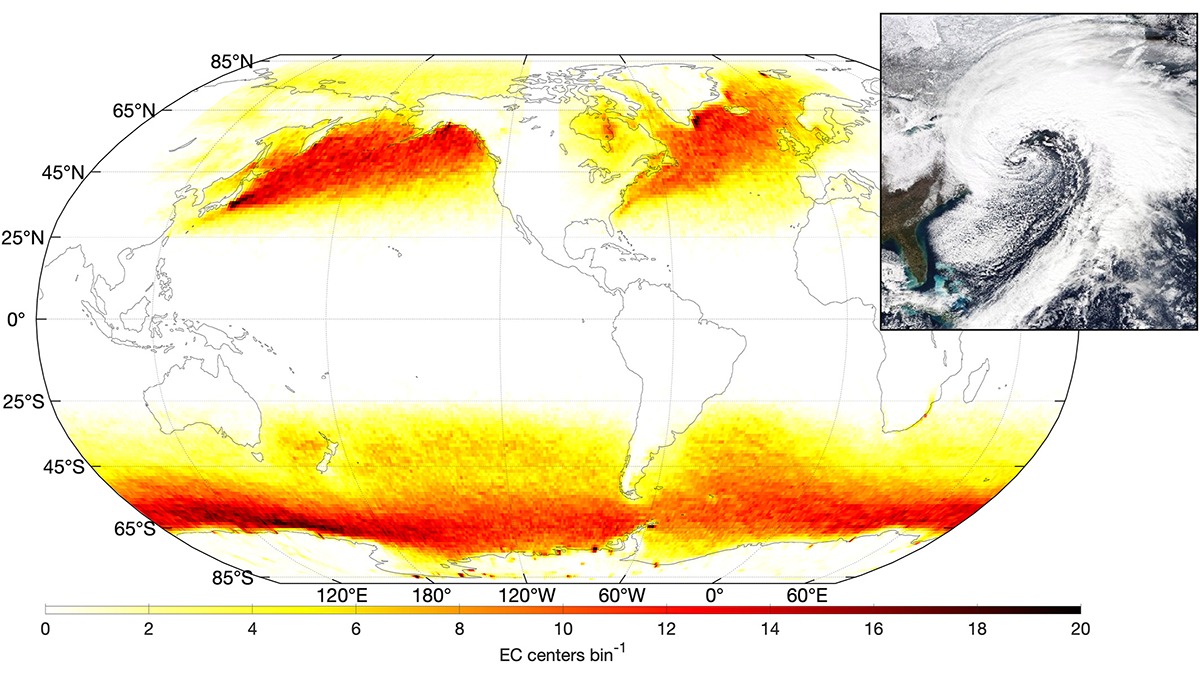Editors’ Highlights are summaries of recent papers by AGU’s journal editors.
Source: Journal of Geophysical Research: Oceans
Extratropical cyclones (ECs) are large storms with very strong winds that can cause hazardous ocean conditions with large waves than can exceed 10 meters in height. These storms, which occur more frequently than hurricanes, form in the mid- to northern latitudes and are not well studied.
Lodise et al. [2022] develop a new algorithm for identifying and tracking ECs and describe the analysis of surface waves heights generated in the North Atlantic, North Pacific, and Southern Ocean regions. The method uses atmospheric pressure from a global database of data-assimilated weather forecasts over a period of 42 years from 1979 to 2020 and a record of significant wave height observations measured using satellite radar altimeters.
The new approach accurately locates and efficiently tracks these storms, enabling seasonal and longer-term regional trends in storm occurrence to be directly related to wave generation. The results reveal the effects of EC characteristics, including cyclone translational speed and maximum winds, on wave growth and wave height variability on a global scale.
Citation: Lodise, J., Merrifield, S., Collins, C., Rogowski, P., Behrens, J., & Terrill, E. (2022). Global climatology of extratropical cyclones from a new tracking approach and associated wave heights from satellite radar altimeter. Journal of Geophysical Research: Oceans, 127, e2022JC018925. https://doi.org/10.1029/2022JC018925
—Ryan P. Mulligan, Editor, Journal of Geophysical Research: Oceans

